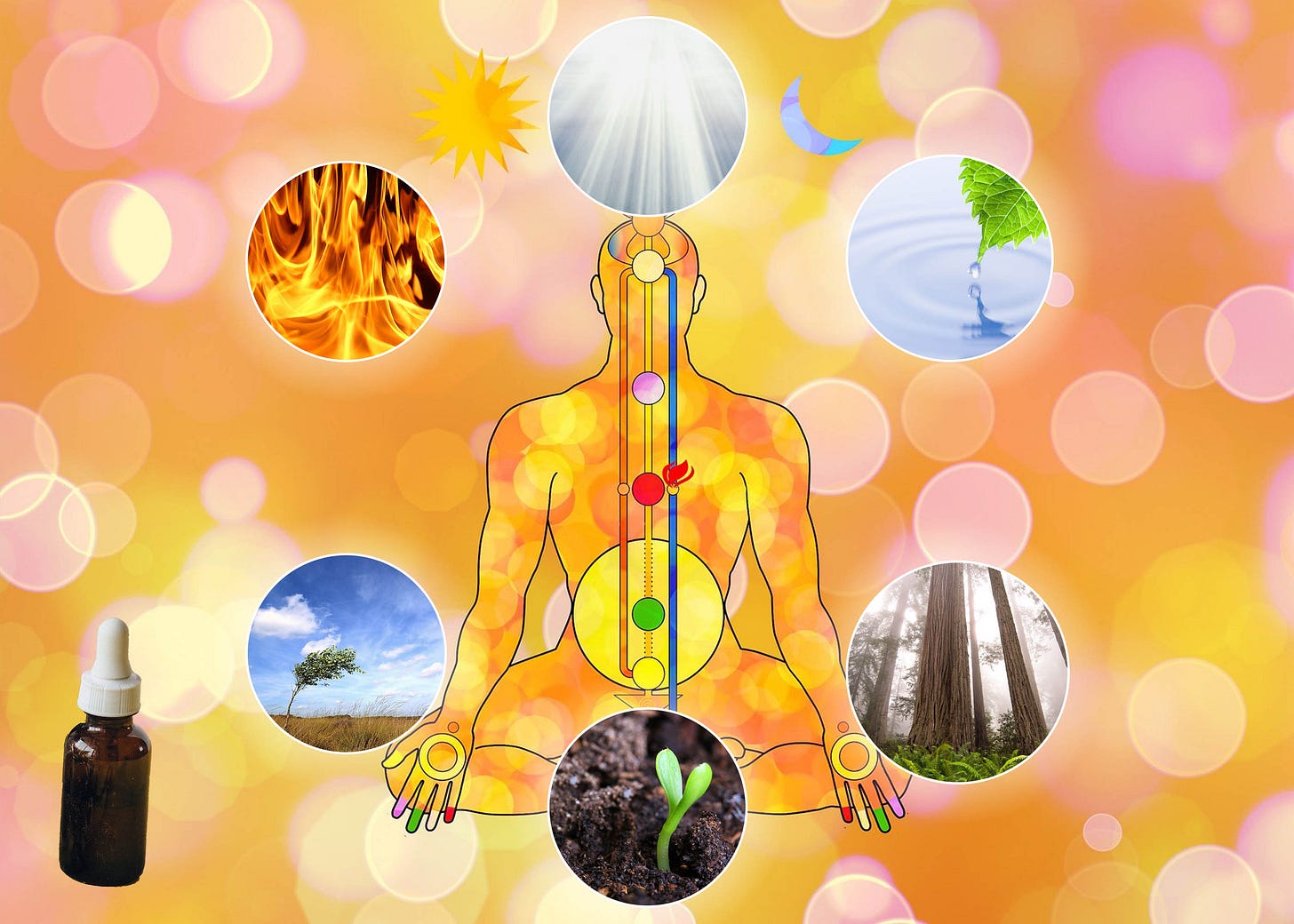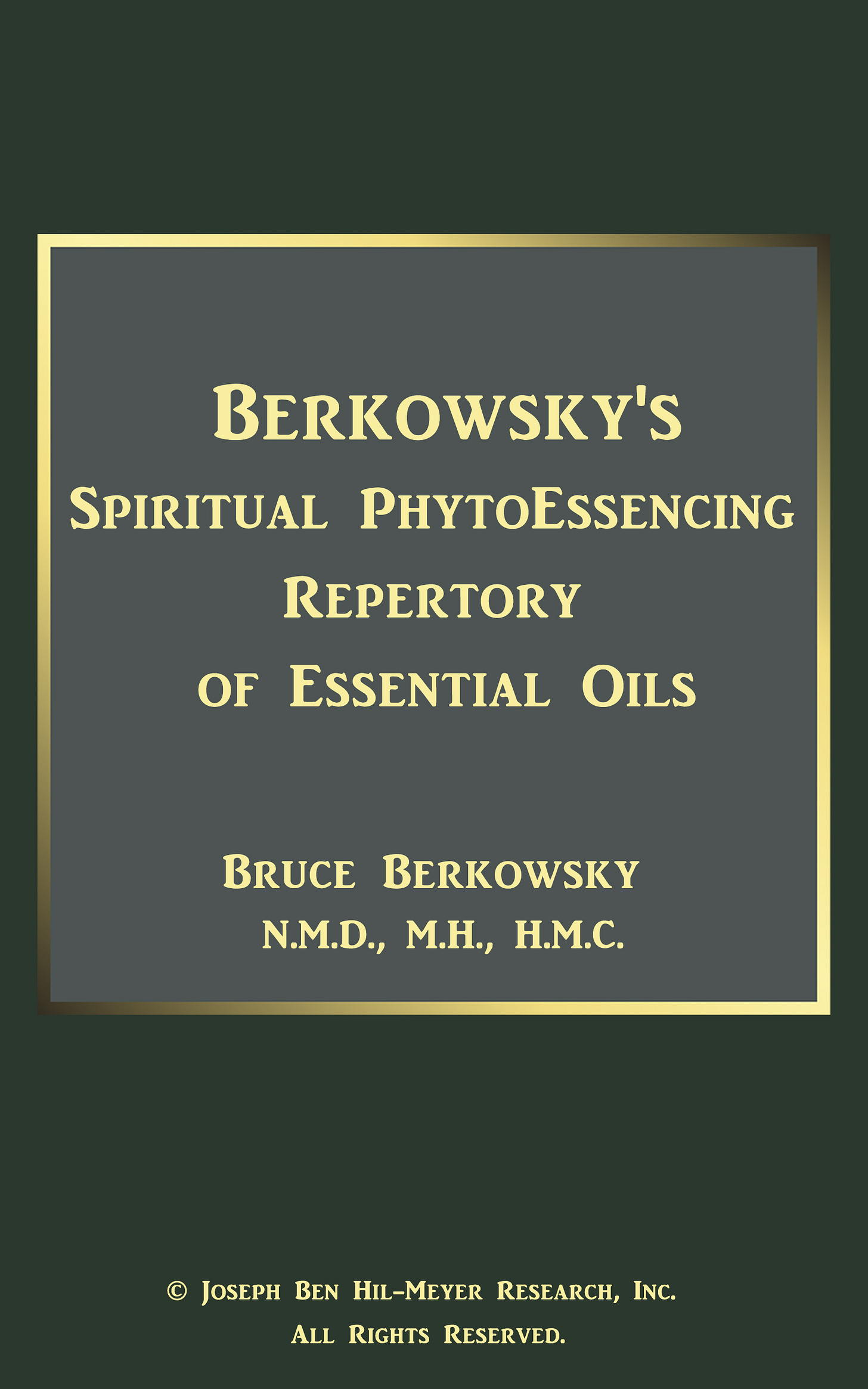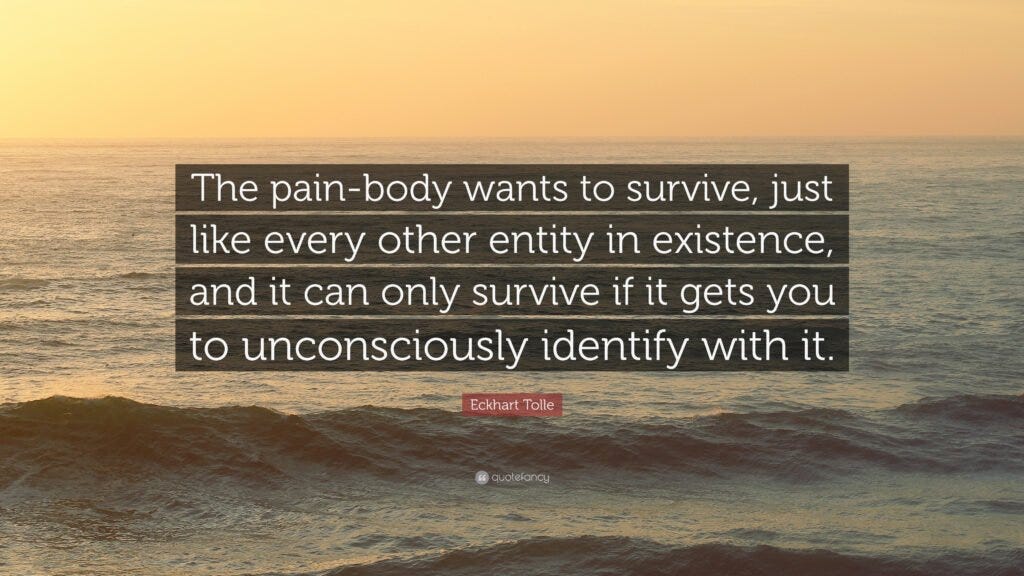Hydrogen Therapy; Essential Oils and the Six Element Paradigm & More
Hello Everyone,
I hope your week is productive and you’re feeling great!
This week, I'd like to introduce you to hydrogen inhalation therapy and a molecular hydrogen/cell salts protocol for the brain to help prevent brain aging, memory loss and dementia as well as to promote recovery from stroke and other brain injuries.
Nearly the entire cosmos was constituted out of hydrogen atoms. It’s estimated that hydrogen constitutes 90% of all atoms and 75% of the mass of the universe. The thermonuclear fusion of hydrogen nuclei supplies the universe with its light and heat.
Anthroposophical physician Gerhard Schmidt, M.D. writes in his book: The Oil-Forming Process: “Nothing is so related to light and warmth as this element: hydrogen.” Along with oxygen, hydrogen has been required for all the evolutionary changes in both prokaryotes (single-celled organisms, including bacteria, that have neither a distinct nucleus with a membrane nor other specialized organelles) and eukaryotes (unicellular or multicellular organisms in which the genetic material is DNA in the form of chromosomes contained within a distinct nucleus). The extremes of oxygen and hydrogen provide balance between the oxidation and reduction reactions that are essential for life.
Therapeutic Use of Molecular Hydrogen
In the body, hydrogen, mostly bound to carbon, oxygen and nitrogen, is part of nearly every molecule, including proteins, sugars, fats and DNA. The hydrogen bond formed between atoms that share a hydrogen atom, is one of the most crucial biochemical interactions regarding the behavior of biological molecules. Thus, hydrogen is an essential factor in physiological regulation.
In the last two decades, research on hydrogen inhalation shows that it may be one of the most important therapeutic gases today. Hundreds of peer-reviewed studies have demonstrated the healing potential of molecular hydrogen. When inhaled, it is quickly absorbed into the bloodstream via the lungs, and circulated throughout the body.
As noted, hydrogen is the lightest element in the universe. As such, human tissues are very permeable to molecular hydrogen. Hydrogen can cross the blood-brain barrier and has the capability of acting at the cellular level, entering the mitochondria, and, under certain conditions, penetrating the nucleus. Since it readily diffuses, free-radical fighting hydrogen molecules can reach places inaccessible to most other antioxidants.
H2 is a unique molecule that can activate the Nrf2 pathway and also increase endogenous levels of glutathione. The Nrf2 pathway is an intrinsic mechanism that defends against oxidative stress. Nrf2 contributes to the anti-inflammatory process by orchestrating the recruitment of inflammatory cells and regulating gene expression through the antioxidant response element (ARE). The ARE signalling pathway regulates anti-inflammatory gene expression and inhibits the progression of inflammation. The Nrf2 pathway plays a preventive role regarding neurodegenerative conditions, as it reduces oxidative stress and nerve inflammation.
Glutathione, an antioxidant made from the amino acids glycine, cysteine, and glutamic acid, is produced by the liver. It is involved in tissue building and repair, the manufacture of essential biochemicals and proteins, and immune system function.
H2 regulates anti-inflammatory and antioxidant activity, mitochondrial energy metabolism, endoplasmic reticulum stress, the immune system, and programmed cell death (i.e., apoptosis) and therefore has applications in a variety of disorders.
Of course, oxygen, the primary objective of breathing, is absolutely essential for continued existence. Notably, while by weight, the human body is composed mostly of oxygen (which is 8 times heavier than hydrogen), by volume, there is twice as much hydrogen than oxygen.
Molecular Hydrogen Combats Harmful ROS and Free Radicals
The terms free radicals and reactive oxygen species (ROS) are commonly used interchangeably as ROS are always free radical compounds. However, not all free radicals are reactive oxygen species as some free radicals (highly reactive due the presence of an unpaired electron) do not contain any oxygen atoms. By definition, ROS always contain oxygen atoms.
Both ROS and non-oxygen-containing free radicals tend to react with molecules of body cells in order to bond with an electron so that their own unpaired electrons stabilize. In other words, in order to stabilize, free radicals are atoms or molecules on the hunt for a spare electron and robbing these from, and thus damaging, cellular structures.
Because H2 is a neutral molecule, it only reacts with the most pathogenic free radicals. Oxidative stress is derived from reactive oxygen species (ROS), such as superoxide anion radical (O2-), hydrogen peroxide (H2O2), nitric oxide, and hydroxyl radical (OH·). Molecular hydrogen selectively reduces the highly toxic ROS hydroxyl radical and peroxynitrite, but not O2-, H2O2, or nitric oxide.
Importantly, some ROS play physiologically important roles in cellular signalling and biological processes, such as apoptosis (i.e., the death of cells that occur as a normal and controlled part of an organism’s growth or development), cell proliferation, and differentiation. Nitric oxide acts as a neurotransmitter that helps facilitate the dilation of blood vessels, thus increasing blood circulation. Oxygen-derived free radicals play an important role in both natural and acquired immunity. Neutrophil and macrophage (types of white blood cells) phagocytosis (the ingestion and destruction of bacteria or other harmful material by white blood cells) involves certain cellular processes for which oxygen is required to produce potent oxidant, bactericidal agents (i.e., these white blood cells use specific ROS to destroy pathogenic bacteria).
However, the hydroxyl radical, the strongest ROS, reacts indiscriminately with nucleic acids, lipids, and proteins and is a major cause of the oxidation and destruction of essential molecules, either directly or by triggering free radical chain reactions.
To reiterate: Molecular hydrogen does not impact the beneficial free radicals used in cell signalling and immune function. Instead, it selectively targets the highly toxic ROS hydroxyl radical and peroxynitrite. Additionally, H2 programs body cells to start pumping out more of endogenous (growing or originating from within an organism) antioxidants, such as glutathione peroxidase (GSH) and superoxide dismutase (SOD).
Importantly, H2 is non-toxic because water is the by-product of its free-radical neutralizing reactions. Each molecule of H2 neutralizes two hydroxyl radicals into two molecules of H2O, providing the additional benefit of cellular hydration.
Molecular hydrogen infused-water drinking and inhalation have shown positive results in central nervous system, metabolic syndrome, disorders of the cardiovascular system, digestive system, respiratory system, urinary system and reproductive system, cancer and neurological diseases.
This article on molecular hydrogen is an excerpt from the expanded chapter in my Synthesis Materia Medica of the Twelve Cell Salts. In the expanded edition of the book, I also provide molecular hydrogen/cell salts protocols for the mitochondria (the single most important factor in aging and disease), the respiratory system and pain.
I haven't spoken much about molecular hydrogen (H2) therapy, because it requires a H2 generator. I try to present therapies that are lower cost so most people can make use of them. However, I have found H2 therapy to be profoundly beneficial and so feel compelled to make people aware of its healing potential.
The H2 inhalation and water machine pictured below is the type my wife and I have personally been using for over two years now. We use almost on a daily basis. It is a high-quality, high performance unit. The systems are delivered worldwide. The Ultra 900 and Ultra 1500 models are a great deal at the moment.
Essential Oils, Soul Archetypes and the Six Element Paradigm
In Spiritual PhytoEssencing (SPE), the term archetype refers to a unique intangible construct of the soul that is a storehouse and generator of a specific pattern of psycho-spiritual and physical expressions.
One of the effects of a Spiritual PhytoEssencing essential oil blend is to help the “I” within a person’s soul reestablish its governing influence.
In the development of the Six Element Paradigm, I relied primarily upon the Five Element Theory of Chinese medicine for orientation. Hence, much of the material regarding the various elements in the Six Element Paradigm has been derived from the Chinese Five Element model. Anthroposophical medicine, the Kabbalah and to a lesser extent, the yogic chakra system and Native American spiritual understanding served as secondary, yet nonetheless crucial, influences the design of the Six Element Paradigm.
The Six Element Paradigm differs in that the Fire element has been divided into independently operative Warmth and Light elements. Additionally, Metal is one the primary elements in the Five Element Theory, with Air considered to be a component of Metal. In the Six Element Paradigm, Air is considered to be a primary element, and Metal to be a sub-element that is a hybrid of certain aspects of Air and Earth.
The association of the thyroid gland with more than one element also highlights another central difference between the Five Element and Six Element models. In the former, the various organs have more or less fixed element associations. For instance, the liver is categorized as the yin organ of the Wood element. In the Six Element Paradigm, the liver is equally associated with Wood, Water and Warmth.
Read this article on Essential Oils, Soul Archetypes and the Six Element Paradigm to learn more.
Six Elements and Chakras Workbook
The Six Element and Chakra Workbook is a valuable resource for even those who do not aspire to deep constitutional healing work with essential oils, such as acupuncturists and acupressurists, and those who practice other bodywork disciplines, will find its insight to be valuable, perhaps even as an adjunctive perspective to Five Element Theory.
The workbook has a chart with correspondences of the Six Elements with organs, sounds, colors, emotions and senses. Elements associations spanning chakras, miasms, sefirot and directions make it a complete and practical workbook for preparing personalized essential oils blends which are powerful enough to affect a positive change in one’s soul-nature.
Please feel free to write to me if you have any questions. I hope you enjoy reading the articles in this newsletter and find the information beneficial in your journey to wholeness of being while improving your practice and skills. There's a lot more available for members of the NHSS/SPE Membership Program, so do sign up!
We look forward to hearing from you.
Shalom,
Molecular Hydrogen Therapy/Cell Salts Synergy for the Brain
Featured Article
Learn about molecular hydrogen for health, it's effects on brain and potential enhancement of the benefits of hydrogen water by the synchronous use of cell salts. Discover the specific combination of cell salts for the brain that can be administered in concert with molecular hydrogen for a rewarding synergistic effect.
Basil Oil and the Scorpion-Type Individual
Featured Article
One of the basic synchronicities employed in Spiritual PhytoEssencing is long-term associations between an oil and a particular animal species. Learn about Basil and The Scorpion, Homeopathic Remedy Androctonos and Healing The Scorpion-Type’s Victims.
SPE Massage TheraBlend
Aromanita Essential Oils Blend
SPE Massage TheraBlend is designed to help vitalize muscles and connective tissues, support joint function, reduce muscle and joint pain, release muscle tension and soothe the nerves.
Blend contains pure essential oils of: rosemary, marjoram, turmeric, cypress, juniper, lemon, grapefruit, helichrysum, St. John’s wort, blue chamomile, clary sage, hyssop, silver fir, petitgrain, cardamom.
Spiritual PhytoEssencing Repertory of Essential Oils
eBook
Dr. Berkowsky’s Spiritual PhytoEssencing (SPE) Repertory of Essential Oils is a reference manual used help a blender identify potentially relevant essential oils for inclusion in a customized essential oil blend. The Repertory is an index of constitutional archetypes and qualities, reactional tendencies, mental, emotional and physical symptoms, dreams and more.
Spikenard Oil, Synchronicities and Complementary Essential Oil Pairs; SPE Concept of Complementary Essential Oil Pairs; Concept of the “Pain-body”
Membership Content - Video Class
This lecture provides an in-depth discussion of the revelation of certain crucial aspects of the inner nature of spikenard oil provided in a semi-encoded way by the most well-known references to it in ancient religious texts.
Additionally, I introduce a new SPE concept that I have recently developed called Complementary Essential Oil Pairs (CEOP). I was inspired to create the CEOP technique by my study of an acupuncture system called Applied Channel Theory developed by a Chinese master named Wang Ju-Yi. Wang Ju-Yi developed a collection of acupoint pairs to treat specific energy imbalances within the acupoint channel (meridian) network. The strategy for using these pairs is not to directly treat a symptom, but rather to transform the energetics that is interfering with that symptom's ability to self-heal.














